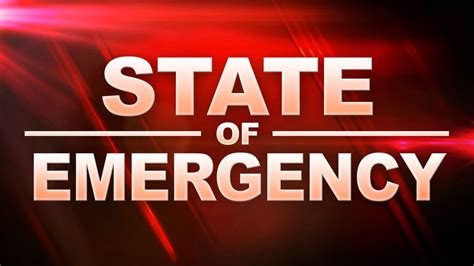
Hundreds of confiscated illegal motorcycles, scooters, and ATVs were crushed in a public display on Staten Island Tuesday, sending a clear message about the city’s crackdown on the illicit vehicles. The destruction, overseen by city officials, aimed to deter the illegal operation and use of these vehicles on New York City streets.
New York City authorities crushed approximately 2000 illegal bikes and scooters in a dramatic demonstration on Staten Island, showcasing the city’s commitment to eliminating the dangerous vehicles from its streets. The vehicles, seized over recent months due to violations of city and state regulations, were systematically destroyed using heavy machinery, reducing them to scrap metal.
“These operations aren’t just about taking illegal vehicles off the streets; they’re about reclaiming our streets for law-abiding New Yorkers,” stated a spokesperson for the mayor’s office during the event. The crackdown is part of a broader city-wide initiative to combat reckless driving, reduce noise pollution, and improve overall safety on roadways and sidewalks.
The public display served as a visual representation of the city’s zero-tolerance policy towards illegal vehicle use. City officials emphasized that the destruction of these vehicles is a necessary step to ensure that unlicensed and uninsured operators are not endangering themselves and others. The initiative has been met with mixed reactions, with some residents applauding the city’s efforts to address the problem, while others question the long-term effectiveness and potential impact on low-income communities that may rely on these vehicles for transportation.
The crushed vehicles included a variety of models, from dirt bikes and ATVs to mopeds and scooters, many of which lacked proper registration, insurance, or safety equipment. According to the New York Police Department (NYPD), the use of these illegal vehicles has been linked to a surge in traffic accidents, noise complaints, and other quality-of-life issues across the city.
The crackdown on illegal bikes and scooters has been ongoing for several years, with the NYPD conducting regular enforcement operations to seize the vehicles and issue citations to offenders. However, the problem persists, with many illegal operators continuing to flout the law and endanger the public. The city hopes that the highly visible destruction of these vehicles will serve as a deterrent and send a message that illegal vehicle use will not be tolerated.
Beyond the immediate safety concerns, city officials also highlighted the environmental impact of these illegal vehicles, many of which lack proper emissions controls and contribute to air pollution. The destruction of the vehicles will be followed by the recycling of the metal, further minimizing their environmental footprint.
The debate surrounding the use of illegal bikes and scooters in New York City is complex, with many factors contributing to the problem. Some argue that the vehicles provide a convenient and affordable mode of transportation for low-income residents, particularly in areas where public transportation is limited. Others contend that the vehicles are a nuisance and a safety hazard, and that the city has a responsibility to crack down on their use.
The city’s response to the problem has been multifaceted, including increased enforcement, public awareness campaigns, and efforts to provide alternative transportation options. However, the challenge remains significant, and it is likely that the debate over illegal bikes and scooters will continue for some time to come.
Background and Context
The issue of illegal bikes and scooters in New York City is not new. For years, residents have complained about the noise, reckless driving, and safety hazards associated with these vehicles. The problem has been particularly acute in low-income neighborhoods, where many residents rely on these vehicles for transportation due to limited access to public transit and the high cost of owning a car.
The legal framework governing the use of bikes and scooters in New York City is complex and often confusing. Under New York State law, most types of motorcycles, scooters, and ATVs are required to be registered, insured, and operated by licensed drivers. However, many of the vehicles seized by the NYPD lack these required documents and are operated by unlicensed individuals.
The penalties for operating an illegal vehicle in New York City can be severe, including fines, vehicle impoundment, and even arrest. However, many illegal operators continue to flout the law, often because they are unaware of the regulations or because they simply choose to ignore them.
The city’s crackdown on illegal bikes and scooters has been met with mixed reactions. Some residents applaud the city’s efforts to address the problem, arguing that the vehicles are a nuisance and a safety hazard. Others criticize the crackdown, arguing that it unfairly targets low-income residents who rely on these vehicles for transportation.
Several advocacy groups have called on the city to adopt a more nuanced approach to the problem, focusing on education and outreach rather than strict enforcement. They argue that many illegal operators are simply unaware of the regulations and that providing them with information and resources would be a more effective way to address the problem.
Details of the Destruction Event
The destruction event on Staten Island took place at a Department of Sanitation facility. Hundreds of mangled frames and twisted metal parts were testament to the city’s commitment to eradicating illegal vehicles.
City officials were present, including representatives from the NYPD and the Department of Transportation, overseeing the process. The event was open to the public, and a number of local residents attended to witness the destruction.
Heavy machinery, including bulldozers and crushers, was used to systematically destroy the vehicles. The process was noisy and visually striking, with the sounds of metal being crushed echoing throughout the facility.
After the vehicles were crushed, the metal was collected and transported to a recycling facility. The city estimates that the recycling of the metal will generate a significant amount of revenue.
Mayor’s Office Stance
The mayor’s office has been a strong proponent of the crackdown on illegal bikes and scooters. In a statement released earlier this year, the mayor emphasized that the city will not tolerate the use of these vehicles on its streets.
“These illegal vehicles are a menace to our communities,” the mayor said. “They endanger pedestrians, disrupt traffic, and contribute to noise pollution. We will continue to crack down on their use and seize them whenever possible.”
The mayor’s office has also announced plans to increase funding for the NYPD’s enforcement efforts. The additional funding will be used to hire more officers, purchase more equipment, and conduct more operations.
NYPD’s Role
The NYPD is responsible for enforcing the laws governing the use of bikes and scooters in New York City. The department has a dedicated unit that focuses specifically on illegal vehicle enforcement.
The NYPD conducts regular operations to seize illegal vehicles and issue citations to offenders. The department also works to educate the public about the laws governing the use of bikes and scooters.
In recent years, the NYPD has significantly increased its enforcement efforts. In 2022, the department seized more than 10,000 illegal vehicles, a record number.
Community Reactions
Community reactions to the crackdown on illegal bikes and scooters have been mixed. Some residents applaud the city’s efforts to address the problem, arguing that the vehicles are a nuisance and a safety hazard.
“I’m glad to see the city finally taking action,” said one resident of Staten Island. “These illegal bikes and scooters are a menace to our community. They drive recklessly, make a lot of noise, and endanger pedestrians.”
Other residents criticize the crackdown, arguing that it unfairly targets low-income residents who rely on these vehicles for transportation.
“This is just another example of the city targeting poor people,” said a resident of the Bronx. “These bikes and scooters are the only way that many of us can get around. The city should be providing us with more transportation options, not taking away the ones we already have.”
Alternative Transportation Options
The city has been working to provide alternative transportation options for residents who rely on bikes and scooters. These options include expanding public transit, improving bike lanes, and promoting the use of electric scooters.
The city has recently announced plans to expand its bike-sharing program, Citi Bike. The expansion will add thousands of new bikes and docking stations to the system.
The city is also working to improve its bike lanes. The Department of Transportation has recently completed several new bike lane projects, and more are planned for the future.
In addition, the city is promoting the use of electric scooters. The city has launched a pilot program that allows residents to rent electric scooters in certain areas.
Legal Challenges
The city’s crackdown on illegal bikes and scooters has faced several legal challenges. Some individuals who have had their vehicles seized by the NYPD have filed lawsuits, arguing that the seizures were illegal.
The lawsuits have raised questions about the city’s authority to seize and destroy illegal vehicles. The courts have generally upheld the city’s authority, but some cases are still pending.
Long-Term Solutions
The long-term solution to the problem of illegal bikes and scooters in New York City is complex and multifaceted. It will require a combination of enforcement, education, and alternative transportation options.
The city must continue to crack down on illegal vehicle use, but it must also work to educate the public about the laws governing the use of bikes and scooters. In addition, the city must provide alternative transportation options for residents who rely on these vehicles.
Only by addressing all of these factors can the city hope to solve the problem of illegal bikes and scooters once and for all.
Detailed Analysis of the Impact
The impact of the crackdown on illegal bikes and scooters extends far beyond the immediate removal of vehicles from the streets. There are significant economic, social, and environmental consequences to consider.
Economic Impact: The economic impact is felt most acutely by those who rely on these vehicles for transportation to work or other essential activities. The loss of a vehicle can create significant hardship, particularly for low-income individuals. Additionally, there’s an economic impact on businesses that rely on these vehicles for deliveries and other services. The destruction of the vehicles also represents a loss of personal property for the owners, even if the vehicles were illegally operated.
Social Impact: Socially, the crackdown has created divisions within communities. Some residents feel safer and more secure with the removal of illegal vehicles, while others feel that the crackdown unfairly targets specific groups. This can lead to tensions and a breakdown in community trust. The perception of fairness in the enforcement of laws is crucial for maintaining social harmony.
Environmental Impact: While the stated intention includes reducing pollution from vehicles lacking proper emissions controls, the environmental impact of crushing and recycling these vehicles should also be considered. The manufacturing of new vehicles has its own environmental footprint. A comprehensive analysis would weigh the environmental costs and benefits of both scenarios. The recycling process itself consumes energy and resources.
Expanding on Alternative Solutions
The provision of alternative transportation options is crucial for the long-term success of any strategy aimed at curbing the use of illegal vehicles.
Public Transportation Improvements: Investing in public transportation is paramount. This includes expanding bus routes, increasing train frequency, and ensuring affordability. Subsidized fares for low-income residents could significantly reduce reliance on illegal vehicles. Furthermore, ensuring that public transportation is accessible to people with disabilities is essential.
Bike Infrastructure Development: The development of dedicated bike lanes and pedestrian walkways is essential for promoting safe and sustainable transportation. Separating bike lanes from vehicular traffic reduces the risk of accidents and encourages more people to cycle. Secure bike parking facilities are also needed to prevent theft and encourage cycling as a viable mode of transport.
Micromobility Solutions: Carefully regulated electric scooter and bike-sharing programs can provide convenient and affordable transportation options, particularly for short trips. These programs should be designed with safety in mind, including mandatory helmet use and designated riding areas. Geofencing technology can be used to prevent scooters from being used in pedestrian-heavy areas or on sidewalks.
Community Outreach and Education: Educational programs aimed at informing residents about traffic laws, vehicle registration requirements, and safe driving practices are essential. These programs should be tailored to different communities and cultural groups. Building trust between law enforcement and the community is crucial for the success of these initiatives.
Addressing Concerns and Criticisms
The city’s crackdown on illegal bikes and scooters has faced valid criticisms, and addressing these concerns is crucial for building public support and ensuring that the policy is fair and effective.
Disproportionate Impact on Low-Income Communities: A common criticism is that the crackdown disproportionately affects low-income communities, where residents may rely on these vehicles due to limited access to public transportation or the high cost of owning a car. The city should conduct a thorough analysis of the impact of the policy on different communities and implement measures to mitigate any negative consequences.
Lack of Affordable Alternatives: Critics argue that the city has not provided sufficient affordable transportation alternatives for residents who rely on illegal vehicles. The city should prioritize investing in public transportation and other sustainable transportation options that are accessible to all residents, regardless of income.
Enforcement Bias: Concerns have been raised about potential enforcement bias, with some alleging that certain communities are targeted more heavily than others. The NYPD should implement measures to ensure that enforcement is fair and equitable across all neighborhoods. Data on vehicle seizures and citations should be publicly available to allow for independent monitoring of enforcement patterns.
The Future of Illegal Vehicle Enforcement
The future of illegal vehicle enforcement in New York City likely involves a combination of continued enforcement, technological innovations, and community engagement.
Advanced Technology: The use of advanced technology, such as license plate readers and drone surveillance, could help to identify and track illegal vehicles. However, the use of such technology must be carefully regulated to protect privacy rights.
Community Partnerships: Building strong partnerships between law enforcement and community organizations is essential for addressing the problem of illegal vehicles. Community organizations can play a key role in educating residents about traffic laws and promoting safe driving practices.
Legislative Reforms: Legislative reforms may be needed to address loopholes in the law that allow illegal vehicles to operate with impunity. For example, strengthening penalties for operating an unregistered vehicle or for reckless driving could deter illegal activity.
Data-Driven Strategies: Implementing data-driven strategies that analyze accident patterns, complaint data, and other relevant information can help the city to target enforcement efforts more effectively. This approach ensures that resources are allocated where they are needed most.
By embracing a comprehensive and multifaceted approach, New York City can work towards reducing the number of illegal vehicles on its streets and creating a safer and more equitable transportation system for all residents.
Frequently Asked Questions (FAQ)
-
Why is the city crushing these vehicles instead of repurposing or donating them? The city states that most of these vehicles are not compliant with safety standards and cannot be legally registered for street use. Therefore, repurposing or donating them would pose a significant liability and safety risk. Many also lack titles, making legal transfer impossible. They are considered unsafe and illegal for street use.
-
What are the penalties for operating an illegal bike or scooter in NYC? Penalties can include fines, vehicle impoundment, and even arrest, depending on the specific violations. Fines can range from several hundred to several thousand dollars, and repeat offenders may face more severe consequences. Unlicensed operation, lack of insurance, and reckless driving are common violations that carry significant penalties.
-
How does the city justify the cost of crushing these vehicles? The city argues that the cost of crushing the vehicles is justified by the benefits of improved safety, reduced noise pollution, and a deterrent effect on illegal vehicle use. The cost is also offset by the revenue generated from recycling the metal. Preventing accidents and related medical costs are additional factors considered in justifying the expenses.
-
What is the city doing to provide affordable transportation alternatives for low-income residents affected by this crackdown? The city is expanding public transit options, improving bike lanes, and promoting the use of electric scooters through pilot programs. Subsidized fares and increased bus routes in underserved areas are being explored to improve accessibility for low-income residents. The long-term goal is to create a comprehensive and equitable transportation system.
-
What recourse do individuals have if they believe their vehicle was illegally seized? Individuals who believe their vehicle was illegally seized can file a complaint with the NYPD or pursue legal action through the courts. They will need to provide documentation proving ownership and registration (if applicable) and argue that the seizure was unlawful. The city’s administrative code outlines the procedures for contesting vehicle seizures.









